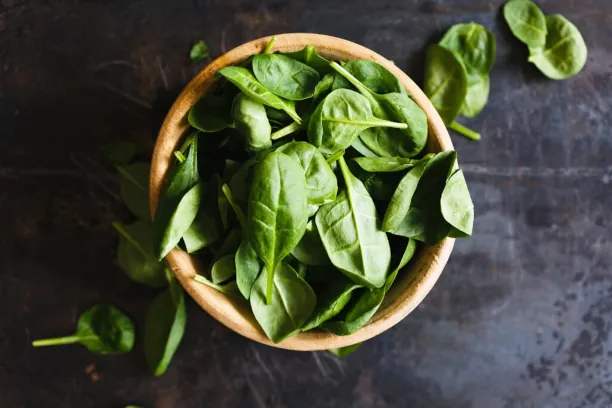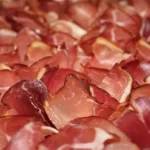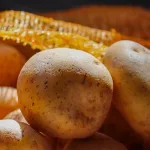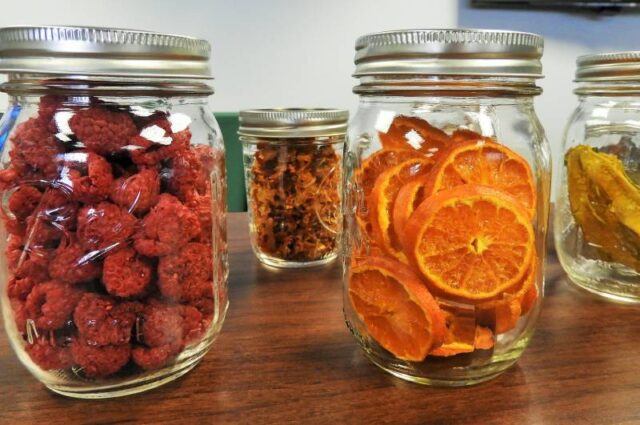A food dehydrator is a machine that is simply dedicated to drying food. If you are just starting dehydrating food yourself, a standard oven might be alright. But if you are serious about it, you definitely want to have a proper food dehydrator. But how does it work?
Food Dehydrator Is Made Of…
Food dehydrator usually has a very simple design:
- Oval or rectangular shaped box
- Doors
- Drying trays (usually 4 – 6 or even more)
- Air intake ventilator
- Heating unit
- Electronic control unit
And that’s it. You just prepare your products for drying, put them onto trays and select an appropriate drying cycle, i.e. for fruit and vegetables, herbs, meat, etc.
There are two main types of food dehydrators: horizontal air flow or vertical air flow.
You can consider both types to be universal food drying machines suitable for drying all kinds and types of products.
So next time, when you hear “fruit dehydrator”, “vegetables dryer” or “meat drying machine”, know, that all these terms refer to food dehydrator, which is suitable for drying of all mentioned products and more.
We prefer horizontal air flow over vertical air flow dryers. And here is why…
Horizontal Airflow Dryers
As said before, food dryers can operate on the principle of vertical or horizontal airflow, i.e. the hot air inside the unit moves from the bottom up to the upper tray, or vice versa (vertical flow) or distributes evenly over the entire volume of the unit and moves horizontally from one side to the other (horizontal flow).
The Advantages Are Obvious:
Horizontal air flow dryers are more expensive, but once you pay a higher price, you will always benefit from the advantages of such device:
- All drying trays receive the same amount of heat, they are equally affected by air circulation. Therefore, during the drying cycle, the bottom and top trays do not need to be constantly checked and replaced.
In a horizontal airflow dryer, juices or other liquids are not poured on the heating element and the fan, as the fan and heating element are on the side of the device. - Use horizontal air dryers to dry different products at the same time without fear of mixing their odors.
- Generally speaking, you can be easily dry bananas with onions – after drying, the bananas will not smell like onions and vice versa. We have tried that just for curiosity.
- In a horizontal air dryer, all drying trays get the same amount of heat. Products dry evenly, you do not need to constantly check which tray is warming up and where heat is not enough.
- The possibility of drying different fruits and vegetables at the same time allows you to use the volume of the dryer up to the maximum by filling it with “everything in the refrigerator”.
Now you know how does a dehydrator work. It’s really that simple.
7 Reasons Why You Need A Food Dehydrator
1. Healthy and Nutritious Food Which Also Tastes Good
Dehydration will let you look at the food differently. Fruits and vegetables you and your family are so used to now can be turned into tasty, healthy snacks. You will find a lot of healthy and unexpected tastes and flavors on your table and will be able to get rid junk food.
Food dehydrator removes most of moisture from products such as vegetables, fruit and even mean or poultry. However, smell and taste may become even more intense. Also important vitamins and minerals are preserved if you dry at low temperatures like 104-108°F (40-42°C).
Other food processing methods like steaming or cooking need high temperatures, so a lot of nutritional value is lost.
2. No More Wasted Food
First things first – if you dry already spoiled food, will it taste good after dehydration? No.
So, don’t let your food spoil.
Check refrigerator and your storage quite often. There is always something at the back of the shelves, which should be eaten right away, however, somehow it gets postponed until tomorrow and.. well, you get the idea.
If you or your family are not in the mood for those apples from your garden, just dry them! You will enjoy apple chips in winter. The same goes with anything else you can grow in your garden. Now you can grow more, and dry any surplus.
Ever thought about beetroot chips?
3. You Can Make It Very Natural And Organic
What makes food “organic”? Certain growing and treatment rules such as avoiding the use of man-made fertilizers and pesticides. This is what makes organic food pricy.
And here is what you can do.
You can grow and dry your own organic food. Forget those dried apples and bananas from supermarkets. Usually they contain chemical additives to preserve good color and taste, not mentioning all that sugar and artificial sweeteners.
Dehydration of your own fruits and vegetables or at least products grown by trusted local farmers may radicaly change the way you eat. Make your own healthy snacks!

4. Control The Whole Process And Make Raw Food
Food processing is a delicate thing. You need to be precise if you want to get good final results.
And that’s where food dehydrator steps in. If you’ve ever tried to dry food in your oven, you know it can be frustrating – not only because of the high cost of electricity, but also because most household ovens can’t be set at 104°F (40°C).
Food dehydrator can do this. With temperatures varying from 104°F to 158°F (40-70°C) you can have absolute control of what product you want to have. And costs will be significantly lower compared to conventional oven.
You can make your own raw food because vitamins and other nutrients are preserved at low drying temperatures. You get selection of healthy snacks and dishes without buying overpriced organic raw products at supermarkets.
What about beef jerky?
Use higher temperature if you want to make beef jerky, for example. Dry meat at about 158°F (70°C), it won’t burn or get roasted and you will have another delicate dish. With a little practice nothing can go wrong with food dehydrator.
5. Use One Of The Oldest Food Preservation Methods
Food dehydration is not a new invention. In fact, it’s one of the oldest food preservation methods in human history. If you remove most of the water content from your products, you get much longer storage terms without food being spoiled.
Bacteria and fungus are considerably slowed down in dried food because they need moisture to thrive. It can be said with confidence, that food drying method has stood the test of time!
6. Save Money
As already mentioned before, it is no secret – these days healthy food is becoming a luxury. If you find yourself avoiding raw and organic food sections in the supermarket just because prices are insanely high, it’s time to take action.
Action
And the action is simple – consider buying yourself a food dehydrator. It is a one time investment which will continue to bring dividends long years after.
Buy more or grow more fresh fruit and vegetables, dry them and have a solid stack of fresh taste and vitamins during winter when even fresh vegetables and fruit become pricier in stores and markets.
7. Save Storage Space
What do you get when you remove most of the water content from your food?
You don’t need to store all that water on your shelves. Dried food occupies only about one-sixth of the space that the raw food would need. Dehydrated products do not need electricity to keep them safe from spoiling.
Simply put the dried food in clean, dry and insect-proof containers. Twist-off jars, plastic containers with dense lids or vacuum bags are suitable for short and long term storage.
Consider storing dried food in dark place with room temperature if you want to keep it for a long term.
How Does a Dehydrator Work Compared To Convection Oven?
Dehydrated food in the convection oven is absolutely possible. This machine gives you hot air flow and can dry various products. Yet, having in mind how does a dehydrator work, you would like to use convection oven for a different intent – food preparation.
Clever people invented a food drying machine not without a purpose. You can choose various preset drying regimes and be sure that you get your dried product as expected. Also, food dehydrator can be more efficient in electricity consumption than a standard convection oven.
Food dehydrator design let’s to automatically change air flow and keep temperature at steady level.
Finally, if you check on Amazon, convection oven costs pretty much the same as a horizontal air flow dryer. Yet, the dehydrator has a lot more drying surface compared with convection oven (if you use it for drying purposes).
Having four to six or even more drying trays you will be able to dehydrate you products much faster.
Dehydrated Food Without Dehydrator?
Drying food without electricity has been known for a very long time. Well, long before electricity itself was invented. Sun drying may give you a very good results if you prepare for such dehydration method properly.
Usually you would like to use a closed box with a glass lid. A box will keep insects away and protect your food from dust and dirt. Glass lid will let sun ray in and accumulate heat inside to maintain the drying process.
It is much longer though compared with electricity based methods. So, be careful if you dry highly perishable foods like meat or poultry. It may perish before you dry it.
Don’t want to buy a dehydrator, but have a standard kitchen oven you would like to use as a fruit drying machine? It’s doable. Has its disadvantages, however. The biggest being high energy consumption and lack of precision while keeping lower temperatures.
How Does a Dehydrator Work With Electronic Control And Various Drying Regimes?
Every modern device is usually controlled by easy to manage and convenient electronic systems. Depending on the product you are going to dry, select the appropriate program and push the button. Dryer will automatically adjust the entire drying cycle.
The programs are set up to evaluate the different factors that affect the drying process, such as the product being dried, energy saving or even the reduction of the noise generated by the unit.
At the end of the drying cycle, depending on the model, dryer goes into standby mode until the dried products are removed and machine can finally be switched off.
Everything is controlled with just a push of a button.It is important to remember that the drying process – i.e. its temperature and duration, in each case will depend on the humidity of the product to be dried, the size of the slices, the ambient temperature and other factors.
Before buying, consider the following…
There are plenty of good food dehydrators out there! Just make your analysis and pick the one for your needs. As discussed, bear in mind following aspects:
- Horizontal (preferred) or vertical air flow
- Size of the unit and drying surface
- What minimal and maximal temperature can dehydrator maintain
- Electricity consumption






